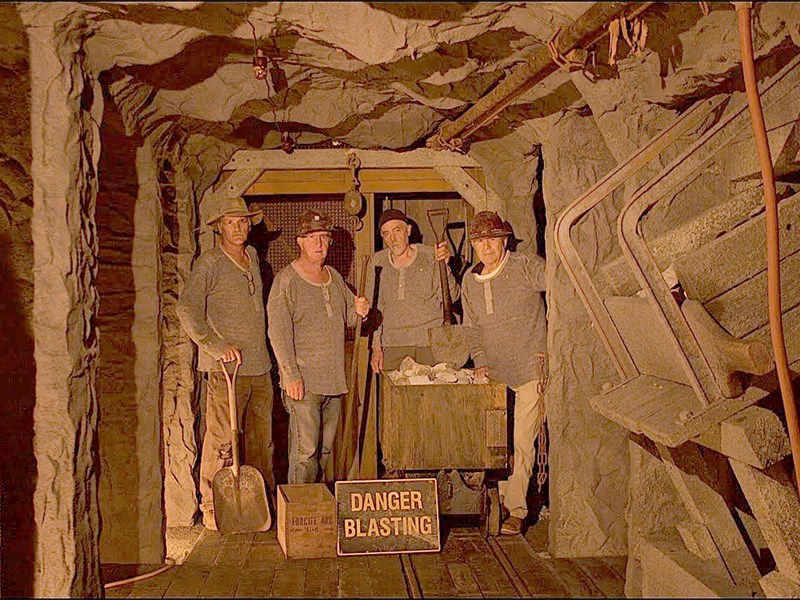Lumber was not the first industry to bring attention to the Powell River area. That honour went to mining on Texada Island.
On Saturday, July 1, Texada Heritage Society will open a new display at Texada Island Museum that expands on the importance the mining industry played in the region’s history.
Mining on Texada dates back to 1871, predating the logging town that sprung up around Powell River’s pulp mill in the early 1900s.
Texada was the hub of the region, populated due to limestone and iron-ore mining around Blubber Bay, followed by the discovery of copper, silver and gold in the Van Anda and Surprise Mountain areas, according to Texada Island Museum curator Doug Paton.
The heritage society has created a replica of the Little Billy Mine, one of the underground mines built to access those precious metals.
Paton said the original Little Billy Mine is similar to other Texada mines; it has a shaft going down. Little Billy also has an accessible portal, he added.
“That tunnel goes in about 600 feet or so and we’ve done a couple of tours in there,” said Paton. “We’ve basically designed the mine from what it looks like on the inside of that corridor.”
After tours of the real Little Billy Mine, which is closed but still workable, the heritage society came up with the idea to add to the display in the Clarence Wood Room, named after the museum’s former curator. Society members thought the room’s historic logging and mining theme would flow into the new Little Billy Mine exhibit.
The display is not an exact representation, but will allow visitors to experience the small area of an underground mine, according to its designer Lorrie Pirart.
“People feel that it’s a real mine when they walk in there,” said Pirart.
Based on Pirart’s predesign, museum volunteers used an aluminum mesh sprayed with three layers of a mortar compound and formed like the inside of a tunnel to create the exhibit, according to Paton.
Pirart said he worked as a miner at the age of 17 and remembers how it looked and felt to work underground.
“At first it’s a little bit scary and claustrophobic but you get over that quick when you start doing work, and then you actually start to like it,” he said.
Pirart added that he fashioned the museum’s Little Billy exhibit as a taller room because visitors will be walking into it.
In the 1870s and into the 1900s, Texada’s gold fever did not compare to what went on in the Klondike region of Yukon territory or other areas such as the Cariboo region of BC where individuals staked a claim and sought their fortune. Mines on Texada were controlled by a few people.
“The mining activity was up to the first world war,” said Paton. “In the mid-1940s they reopened the Little Billy Mine and it operated until about 1955.”
Paton said there is still gold on Texada.
“It’s a little harder to get right now,” he said. “One fellow owns all of these properties and he’s trying to promote it to reopen again.”
Texada Island Museum is located at the former elementary school in Van Anda; four large classrooms have been converted into displays. A portion of one exhibit room has been used for the Little Billy Mine replica.
The actual Little Billy Mine is located on the east side of Texada, just outside of Van Anda.
“I would like to see it cleaned up one day and opened up as a tourist attraction,” said Pirart. “It’s kind of cool that you go back in history when you go in there.”



